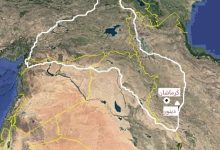The Indigenous peoples of Australia, commonly known as Aboriginal Australians, represent one of the world’s oldest continuous cultures. Their rich and diverse heritage spans over 65,000 years, making them one of the most ancient continuous cultures globally. This article delves into their history, cultural practices, languages, art, and the ongoing challenges they face.
Historical Background
The history of Indigenous Australians is deeply intertwined with the land itself. Evidence suggests that their ancestors arrived on the Australian continent via land bridges and sea routes from Southeast Asia. This migration occurred in several waves, and over millennia, these early settlers adapted to the diverse environments across Australia. Archaeological findings, such as ancient rock art and tools, indicate a sophisticated understanding of their environment and a highly developed social structure.
Cultural Practices and Beliefs
Indigenous Australian culture is characterized by a profound connection to the land, which is central to their spiritual beliefs and practices. The concept of “Dreamtime” or “Dreaming” is fundamental to their spirituality. Dreamtime encompasses the creation period when ancestral beings shaped the world and established the laws and traditions that govern Indigenous societies. Stories, songs, dances, and art are used to convey these creation myths and cultural values.
Traditional practices include a deep respect for the environment and sustainable living. Indigenous Australians traditionally practiced fire-stick farming, using controlled burns to manage vegetation and promote the growth of edible plants. This technique not only helped in managing the landscape but also played a crucial role in maintaining biodiversity.
Languages
Australia’s Indigenous population speaks over 250 languages, although many are now endangered. These languages belong to several different families, reflecting the diverse cultures of the Aboriginal peoples. Each language group has its dialects and variations, and linguistic diversity is a testament to the complex social structures and cultural nuances of Indigenous Australians.
Efforts to preserve and revive Indigenous languages are ongoing, with various programs aimed at teaching these languages to younger generations. Language revival is seen as a crucial aspect of maintaining cultural identity and heritage.
Art and Symbolism
Indigenous Australian art is renowned for its vibrant use of color and intricate patterns. It serves as a medium for storytelling, ceremonial purposes, and the transmission of cultural knowledge. Traditional art forms include rock painting, bark painting, and body art. The use of dot painting, which became widely recognized in the 20th century, is one of the most distinctive styles, often used to represent stories and Dreamtime events.
In addition to visual arts, music and dance are integral to Indigenous cultural expression. Traditional instruments such as the didgeridoo, clapsticks, and various types of drums are used in ceremonial contexts and storytelling. Dance performances often convey historical narratives, spiritual beliefs, and community values.
Social Structure and Kinship
Indigenous Australian societies are traditionally organized into complex kinship systems that define social roles, responsibilities, and relationships. Kinship systems vary among different groups but generally include intricate rules regarding family connections, marriage, and clan affiliations. These systems play a vital role in maintaining social cohesion and cultural continuity.
Contemporary Issues
Despite their rich heritage, Indigenous Australians face significant challenges in contemporary society. The effects of colonization, which began with the arrival of Europeans in the late 18th century, have had lasting impacts on Indigenous communities. These effects include displacement from traditional lands, disruption of cultural practices, and socio-economic disadvantages.
Issues such as health disparities, lower life expectancy, and higher rates of incarceration are prevalent among Indigenous Australians. There are ongoing efforts to address these challenges through government policies, community programs, and advocacy by Indigenous leaders.
Reconciliation and recognition of Indigenous rights are crucial topics in Australian politics. Efforts towards reconciliation include initiatives aimed at acknowledging the past injustices, promoting cultural awareness, and fostering greater respect for Indigenous peoples and their contributions to Australian society.
Preservation and Revival
Preserving and reviving Indigenous Australian culture is an ongoing endeavor. Various organizations, both Indigenous and non-Indigenous, work to protect cultural heritage sites, support language revival programs, and promote the arts. Education about Indigenous cultures and history is also a key component of these efforts, aiming to foster greater understanding and respect among the wider Australian population.
In recent years, there has been a growing recognition of the importance of Indigenous knowledge systems and their contributions to environmental management and sustainability. This has led to increased collaboration between Indigenous communities and researchers, highlighting the value of traditional ecological knowledge in addressing contemporary environmental challenges.
Conclusion
The Indigenous peoples of Australia have a rich and diverse cultural heritage that spans tens of thousands of years. Their deep connection to the land, intricate social structures, and vibrant artistic expressions form a unique tapestry that continues to influence Australian culture and society. While facing significant challenges, Indigenous Australians remain resilient, with ongoing efforts to preserve their heritage and achieve greater recognition and equality. Understanding and respecting their history and culture is essential for fostering a more inclusive and equitable future.




